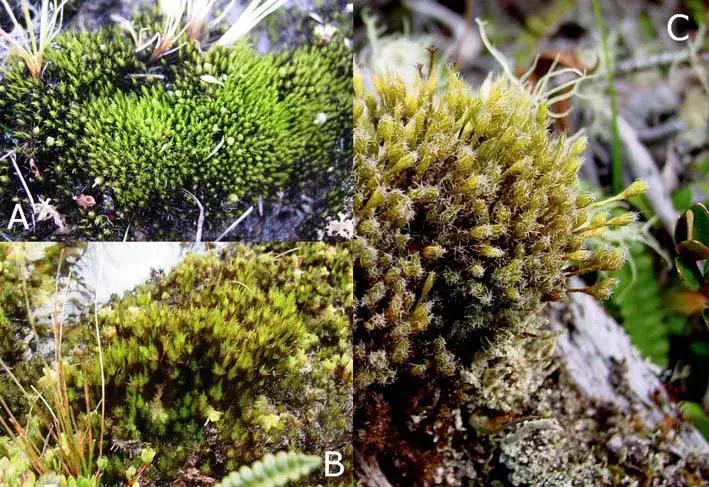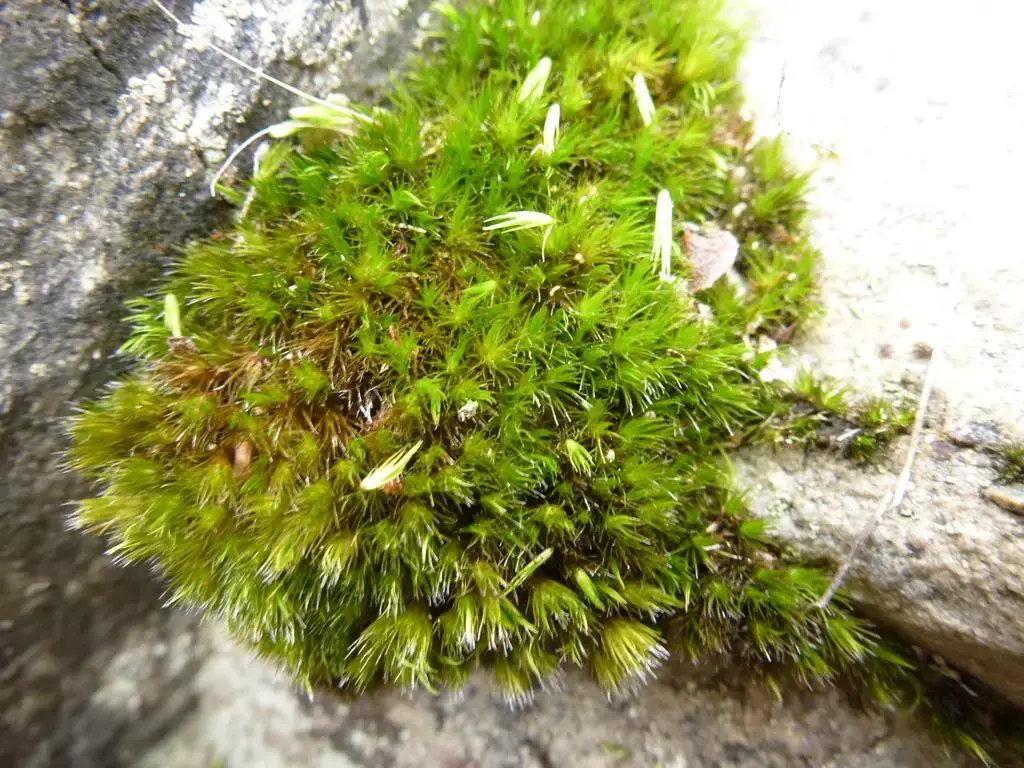
campylopus.jpg from: https://www.chlorischile.cl/musgoschiloe/campylopus.htm
Introduction
Prepare to embark on a captivating journey into the world of Campylopus chilensis De Not., a remarkable moss species that belongs to the Leucobryaceae family. Often referred to simply as Campylopus, this unassuming plant holds a wealth of fascinating secrets waiting to be uncovered by enthusiasts and nature lovers alike.
Background
Before delving into the intricacies of Campylopus chilensis, it’s essential to understand its place within the broader context of Bryophyta, the division encompassing mosses, liverworts, and hornworts. These diminutive yet resilient organisms have been thriving on our planet for millions of years, playing crucial roles in various ecosystems.
Main Content
Morphology and Identification
Campylopus chilensis is a tufted moss that forms dense, cushion-like mats. Its slender stems are adorned with narrow, elongated leaves that curl inward when dry, giving the plant a distinctive appearance. The leaves are typically a vibrant green hue, but they can take on a reddish or brownish tint in certain environmental conditions.
One of the most striking features of Campylopus chilensis is its falcate (sickle-shaped) leaves, which curve gracefully to one side. This characteristic, along with the presence of a

large.jpeg from: https://inaturalist.ala.org.au/observations/82263909
hyaline (transparent) leaf base, aids in the identification of this species.
Global Distribution and Habitat
Campylopus chilensis is widely distributed across various regions of the world, including South America, Central America, and parts of Europe. It thrives in a diverse range of habitats, from moist and shaded areas to exposed rock surfaces and even disturbed sites like roadside banks.
This moss’s ability to colonize a variety of environments is a testament to its remarkable adaptability and resilience. Whether it’s clinging to the bark of trees or carpeting the forest floor, Campylopus chilensis has found a way to thrive in a multitude of ecological niches.
Ecological Roles and Adaptations
Despite its diminutive size, Campylopus chilensis plays a vital role in various ecosystems. As a pioneer species, it is often one of the first organisms to colonize bare or disturbed areas, paving the way for other plants to establish themselves.
This moss possesses remarkable adaptations that enable it to survive in challenging environments. Its ability to curl its leaves inward during dry periods helps conserve moisture, while its dense mats provide insulation and protection for other organisms, such as invertebrates and fungi.
Additionally, Campylopus chilensis contributes to soil formation and nutrient cycling, making it an essential component of healthy ecosystems.
Case Studies/Examples
In a recent study conducted in the Andes Mountains of South America, researchers discovered that Campylopus chilensis played a crucial role in stabilizing soil and preventing erosion on steep slopes. The moss’s dense mats acted as a natural barrier, holding the soil in place and allowing other vegetation to establish itself.
Another fascinating example comes from the Azores Islands, where Campylopus chilensis has been found growing on the slopes of volcanic craters. Its ability to thrive in these harsh, nutrient-poor environments highlights its remarkable adaptability and resilience.
Technical Table
| Characteristic | Description |
|---|---|
| Family | Leucobryaceae |
| Genus | Campylopus |
| Species | chilensis |
| Growth Form | Tufted, cushion-like mats |
| Leaf Shape | Falcate (sickle-shaped), narrow, elongated |
| Leaf Base | Hyaline (transparent) |
| Color | Vibrant green, can turn reddish or brownish |
| Habitat | Moist, shaded areas, exposed rock surfaces, disturbed sites |
| Distribution | South America, Central America, parts of Europe |
Conclusion
Campylopus chilensis De Not., a humble yet extraordinary moss, has captivated the hearts and minds of enthusiasts worldwide. From its striking morphological features to its remarkable ecological roles and adaptations, this species serves as a testament to the incredible diversity and resilience of the natural world.
As we bid farewell to this fascinating journey, a thought-provoking question lingers: In an ever-changing world, how can we ensure the preservation of these remarkable organisms and the ecosystems they support?